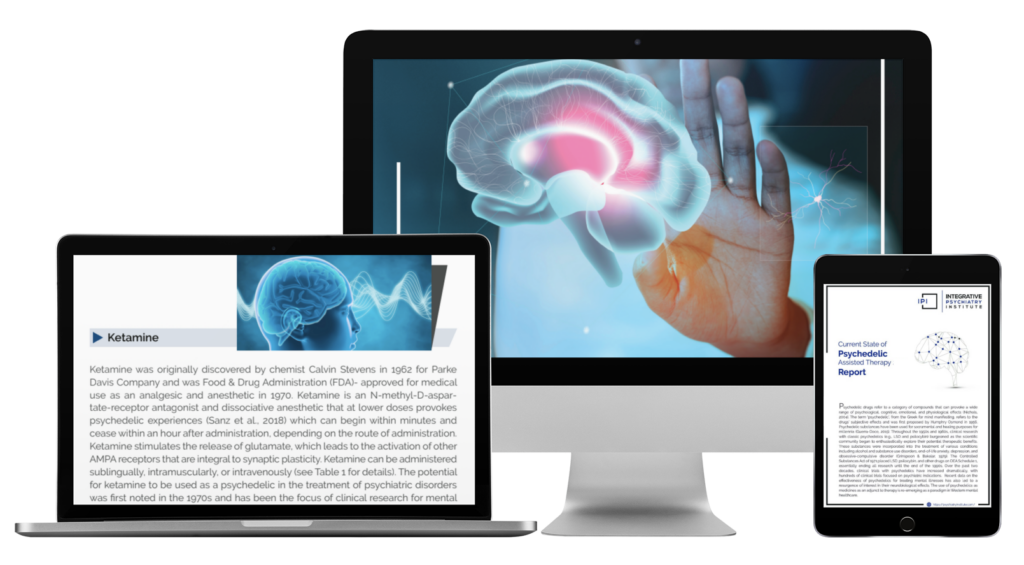
Both psychedelic use and mindfulness practices have been used for thousands of years across the world, often for spiritual purposes. While psychedelics are currently gaining therapeutic influence in the United States, mindfulness is still largely considered an elusive mental health tool.
So what is mindfulness? Mindfulness is characterized by awareness of and nonjudgement toward present moment feelings, thoughts, and bodily sensations; in other words, mindfulness is a connection to the self that tracks internal experiences, particularly emotional attachments. Anecdotal reports suggest that psychedelic use might be supportive for cultivating such states of being. Newer research hypothesizes that psychedelics and mindfulness are synergistic in their effects, impacting the experience of each other.
Both psychedelics and mindfulness practices can influence perception, cognition, and emotional regulation. For example, psychedelics may produce states of transcendence, tapping into spiritual realms beyond the body and mind. Sometimes a temporary step outside of the self makes it easier to notice and observe what is happening within the self, such as physical senses (sights, smells, muscle tension/relaxation, etc), intuitions, and emotions. In this way, psychedelics may also support re-engagement with the body (see blog on psychedelics and embodied cognition here) and reorganization of self identities (see blog on psychedelics and the self here), similar to reported effects of meditation and yoga.
Psychedelic therapy and mindfulness-based therapies also have direct and overlapping influences on neuroscience and physiology. Both therapeutic approaches have effects on the default mode network in the brain, the circuit that is most active during self-directed thought and rumination. Psychedelics and mindfulness exercises tend to reduce activity in this brain region, which may be related to letting go of a fixed sense of self. Psychedelic administration and meditation have also been independently shown to impact the immune system, lowering inflammatory markers and helping the body adapt to stressors.
Psychedelics Support Mindfulness
Psychedelics have been called a “gateway” to mindfulness because they facilitate a state of heightened awareness and openness. Some studies have found that psychedelic use (regardless of whether or not it was “therapeutic” or conducted with a facilitator present) is naturally associated with increased engagement with mindfulness meditation. This might be due to overlapping psychological impacts. For example, psychedelics might alter a person’s sense of time and space, allowing for a deep immersion in the now. Another common psychedelic experience is the dissolution of the ego, which helps reduce the rigidity of personal stories and habitual thought patterns, leading to a de-attachment of judgements. Soothing a protective or reactive inner dialogue may open individuals to new ways of thinking, perceiving, and behaving in the world; in this way, benefits of psychedelic-enhanced mindfulness include increased psychological and cognitive flexibility.
Psychedelic dosing sessions can bring hidden, resisted, or suppressed emotions to the surface; psychedelic-assisted therapy (PAT) provides an opportunity for clients to confront and integrate such feelings in a safe, attentive, and therapeutic setting. The concept of “non-avoidance” offers that working through challenging experiences or content that arises during a psychedelic dosing session might actually confer therapeutic benefit, when handled in a safe container. Clinical trials have documented shifts in participant narrative attitudes about traumas, coping mechanisms, and identities following PAT protocols, leading to posttraumatic growth (see blog on posttraumatic growth here). By experiencing and accepting emotions that arise, individuals can develop greater resilience and self-awareness.
Psychedelic-assisted therapy training, such as IPI’s Psychedelic Assisted Psychotherapy Training (PAPT), emphasizes the importance of providing a calm, non-judgemental abiding presence, even when supporting a client through difficult experiences, suggesting that mindfulness is already a part of PAT best practices. Integrating insights from a psychedelic journey is also a vital component of PAT; mindfulness-based frameworks are often incorporated to help clients make sense of and conceptualize different parts of the experience. At this point, therapists and clients work together to encourage mindfulness in daily habits moving forward.
Conclusion
In scientific literature, the relationship between psychedelic use and mindfulness is still largely undescribed, yet there are intriguing implications for their potential synergistic effects. Continuing the pursuit of understanding how these modalities influence wellbeing provides deeper insight into existential questions of consciousness, existence, and what it means to be human.







